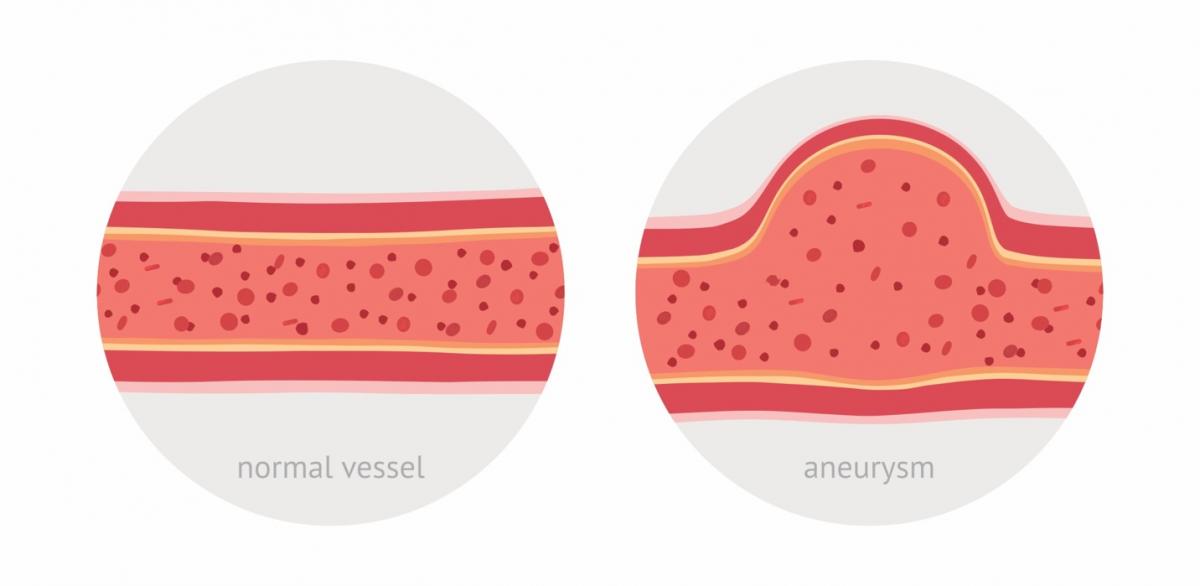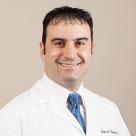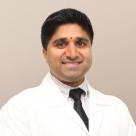You are here
Specialties

Aneurysm Types, Causes & Risk Factors, Symptoms, Diagnosis, and Treatments
An aneurysm happens when the wall of a blood vessel weakens, causing it to bulge or balloon out abnormally. The bulge can cause the wall of the blood vessel to rupture (split open), which can lead to life-threatening internal bleeding.

Types of Aneurysms
An aneurysm can develop in several parts of the body, including:
- The aorta, the main artery of the body, carries oxygen-rich blood from your heart to your organs, via your circulatory system.
- An abdominal aortic aneurysm (AAA) is an aneurysm that develops in the section of the aorta that passes through the abdomen.
- A thoracic aortic aneurysm is an aneurysm that develops in the section of the aorta that passes through the chest. .
- Blood vessels that supply blood to the brain; aneurysms that develop in these blood vessels are called brain aneurysms.
- Blood vessels that carry blood to or from other parts of the body, such as the neck, pelvis, and legs and feet; aneurysms that develop in these blood vessels are referred to as peripheral aneurysms.
- An iliac artery aneurysm is abnormal bulging and weakness of the iliac artery wall. The iliac artery is actually a group of arteries in the pelvis. If an iliac aneurysm bursts, it can cause uncontrollable bleeding that can be life threatening.
- A carotid artery aneurysm is an abnormal bulge in the wall of the carotid artery, which carries oxygenated blood to the brain.
- Visceral artery aneurysms are abnormal bulges in the arteries that carry blood to the liver, kidneys, spleen, or intestines. A renal artery aneurysm is a bulge in the wall of an artery to the kidney. A splenic artery aneurysm is a bulge in the wall of an artery to the spleen.
Aneurysm Causes & Risk Factors
Both high blood pressure and atherosclerosis (a buildup of fatty deposits in the artery walls) can lead to an aneurysm.
People over the age of 60 are at an increased risk of developing an aneurysm. Poor diet, smoking, obesity, and a family history of heart conditions, including heart disease, also increase a person’s risk.
Aneurysm Symptoms
Most aneurysms don’t cause symptoms until they rupture. Symptoms of a ruptured aneurysm vary depending on the type, severity, and location of the aneurysm, but generally can include:
- Increased heart rate
- Pain in abdomen, back, arm, or leg
- Feeling dizzy or lightheaded
Symptoms of a ruptured brain aneurysm include:
- Sudden, extremely severe headache
- Stiff neck
- Blurred or double vision
- Nausea and vomiting
- Light sensitivity
- Eyelid drooping
- Sudden changes in mental state
While not all aneurysms have the same risk of rupturing, when one does rupture, it can lead to internal bleeding, a serious medical emergency. If you experience symptoms like extreme pain in your back or belly that does not go away, seek emergency medical help immediately.
Aneurysm Diagnosis
To diagnose an aneurysm, your primary doctor will likely refer you to a vascular specialist. Your specialist will assess the size and location of your aneurysm and review your medical history to determine your risk for rupture and the best treatment approach.
Your specialist may order a CT scan, which uses X-ray images to reveal the condition of your blood vessels, including any blockages or bulges in the vessel walls.
Aneurysm Treatments
Treatment will depend on the type and location of the aneurysm.
- Medications: Your doctor may recommend medications to treat high blood pressure and cholesterol. By reducing pressure and fatty buildup in the blood vessels, these medications can help prevent the aneurysm from rupturing.
- Minimally invasive surgery: If you have a weakened blood vessel in your chest or abdomen, your doctor may recommend a type of minimally invasive surgery called an endovascular stent graft, which involves repairing and reinforcing the damaged blood vessel.
- Open surgery: You may need open surgery to repair the damaged blood vessel. Open surgery procedures involve making a larger incision in the abdomen or chest, depending on the aneurysm location, to perform the blood vessel repair. While open surgery is more invasive and typically has a longer recovery time, it is sometimes necessary.
The expert vascular specialists at Crystal Run Healthcare will recommend minimally invasive surgery whenever possible to reduce the risk of complications and hasten recovery time.
Experts in Vascular Health
The skilled physicians and surgeons at Crystal Run Healthcare dedicate their lives to helping patients with vascular conditions, including aneurysms.
We’ll work closely with you to develop a comprehensive treatment plan and recommend healthy lifestyle habits to keep your vascular system healthy.
Schedule an appointment with one of our vascular specialists today.
Featured Providers
John A. Fiorianti MD, FACS
SPECIALITIES: Vascular Surgery, Vein Center
Board Certified: General Surgery, Vascular Surgery
William Gotsis MD, FACC
SPECIALITIES: Cardiology, Interventional Cardiology
Board Certified: Cardiovascular Disease, Interventional Cardiology
Neel Khanna MD, MPH
SPECIALITIES: Interventional Cardiology, Cardiology
Board Certified: Cardiovascular Disease, Interventional Cardiology, Echocardiography, Internal Medicine, Nuclear Cardiology, Vascular Imaging


